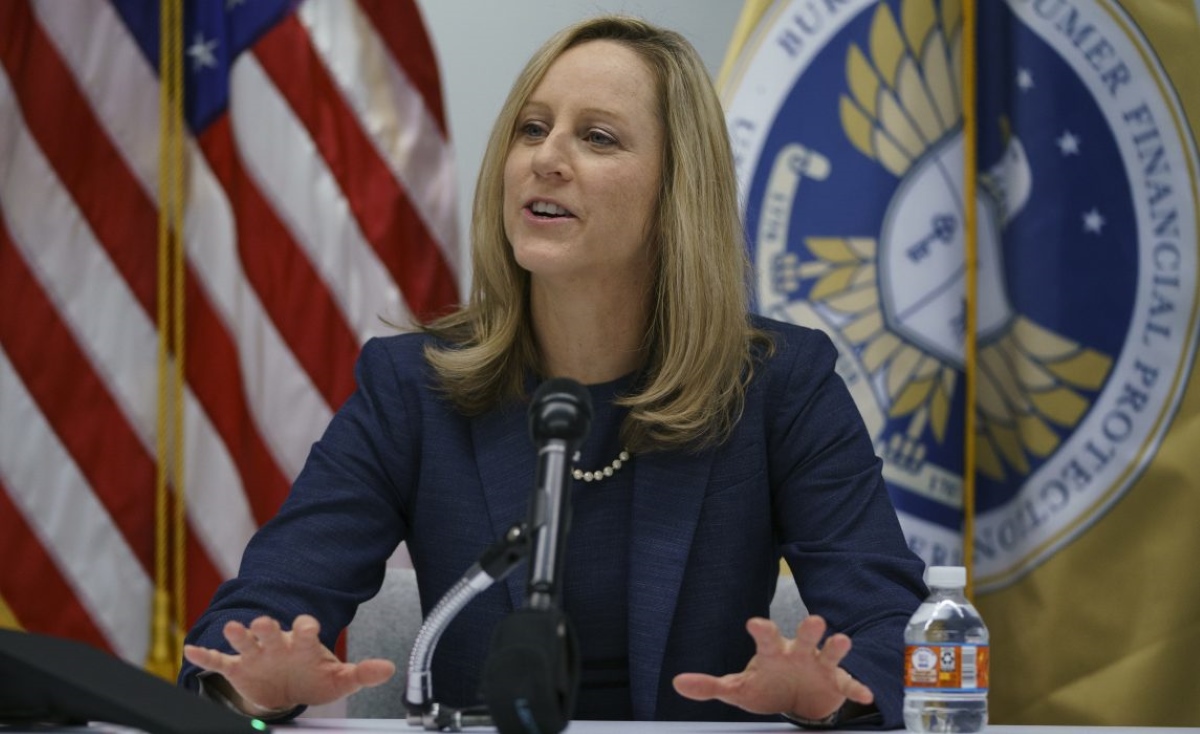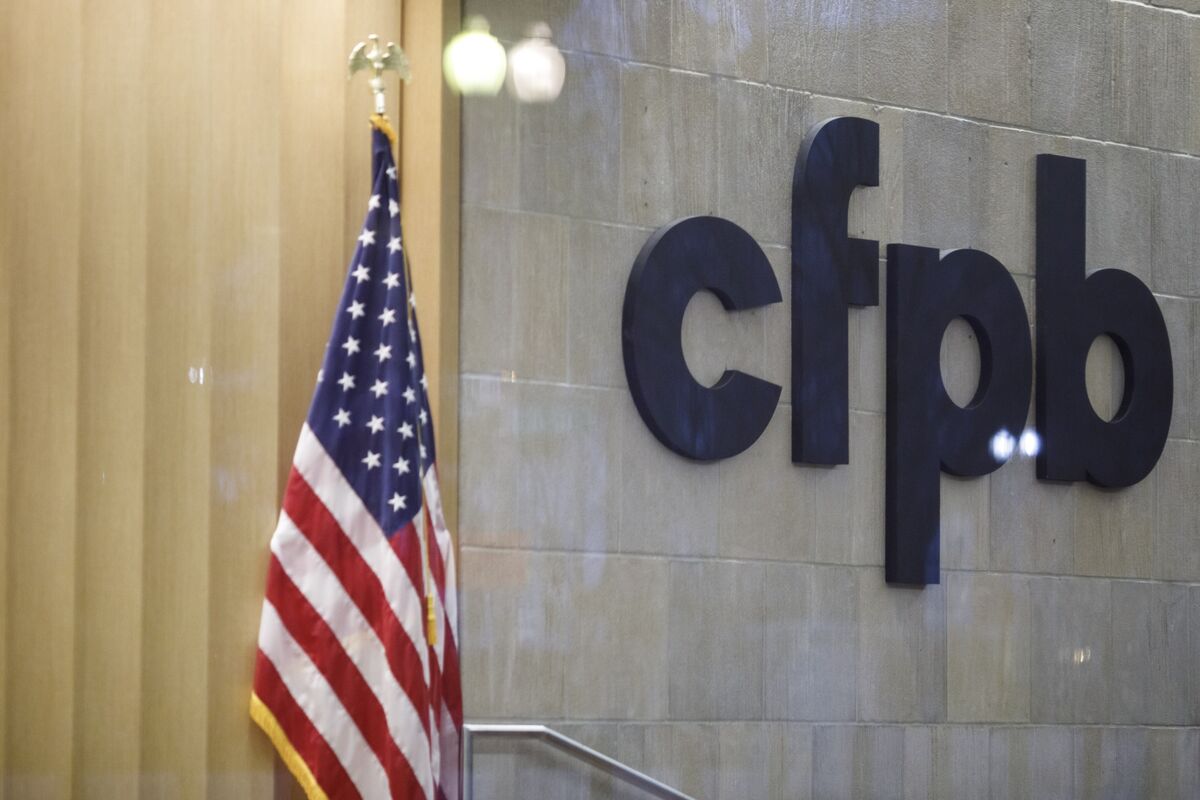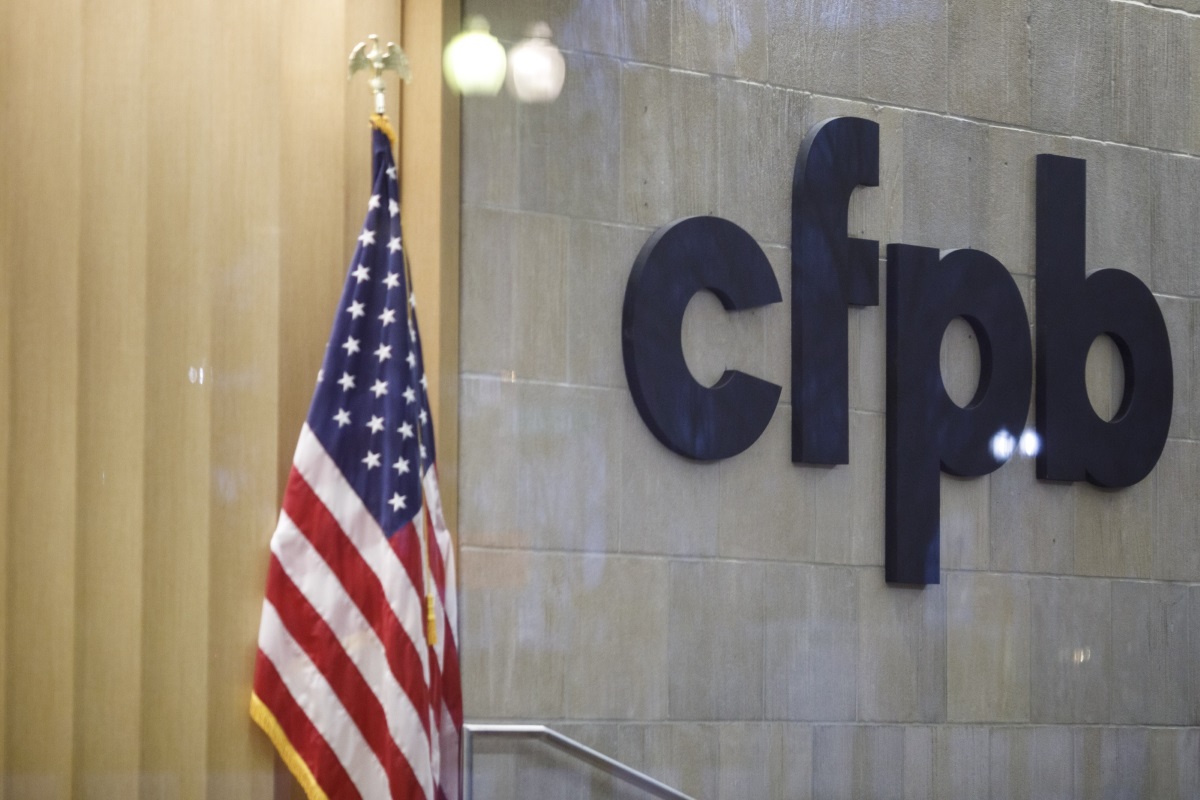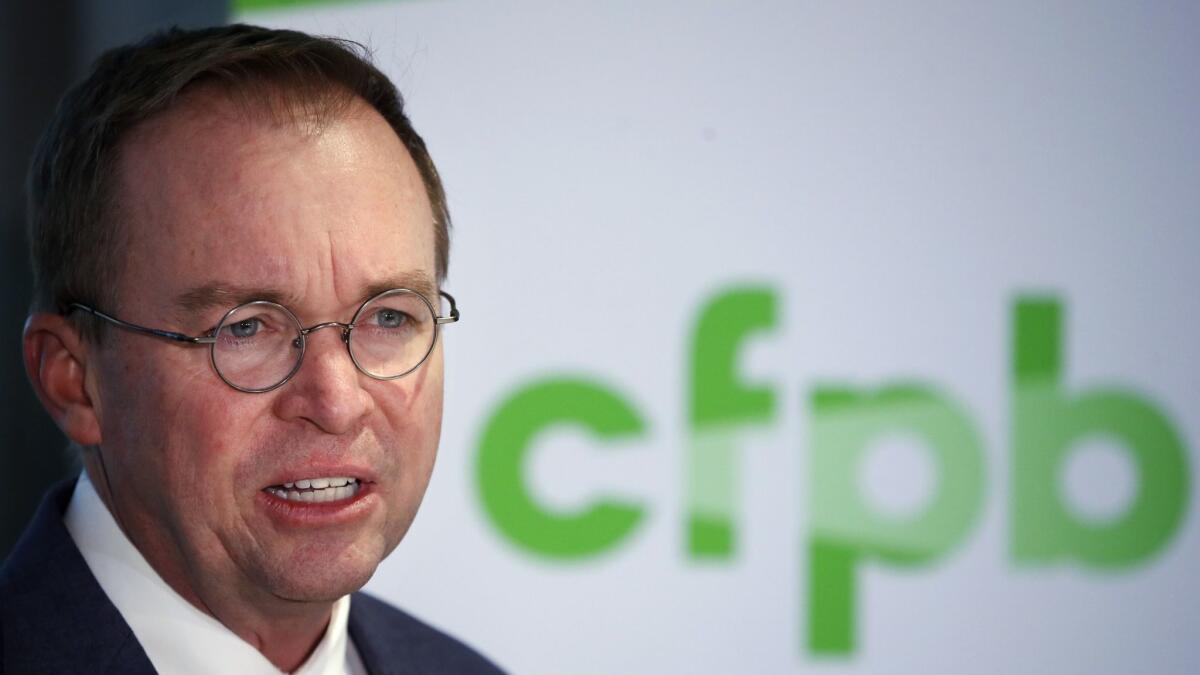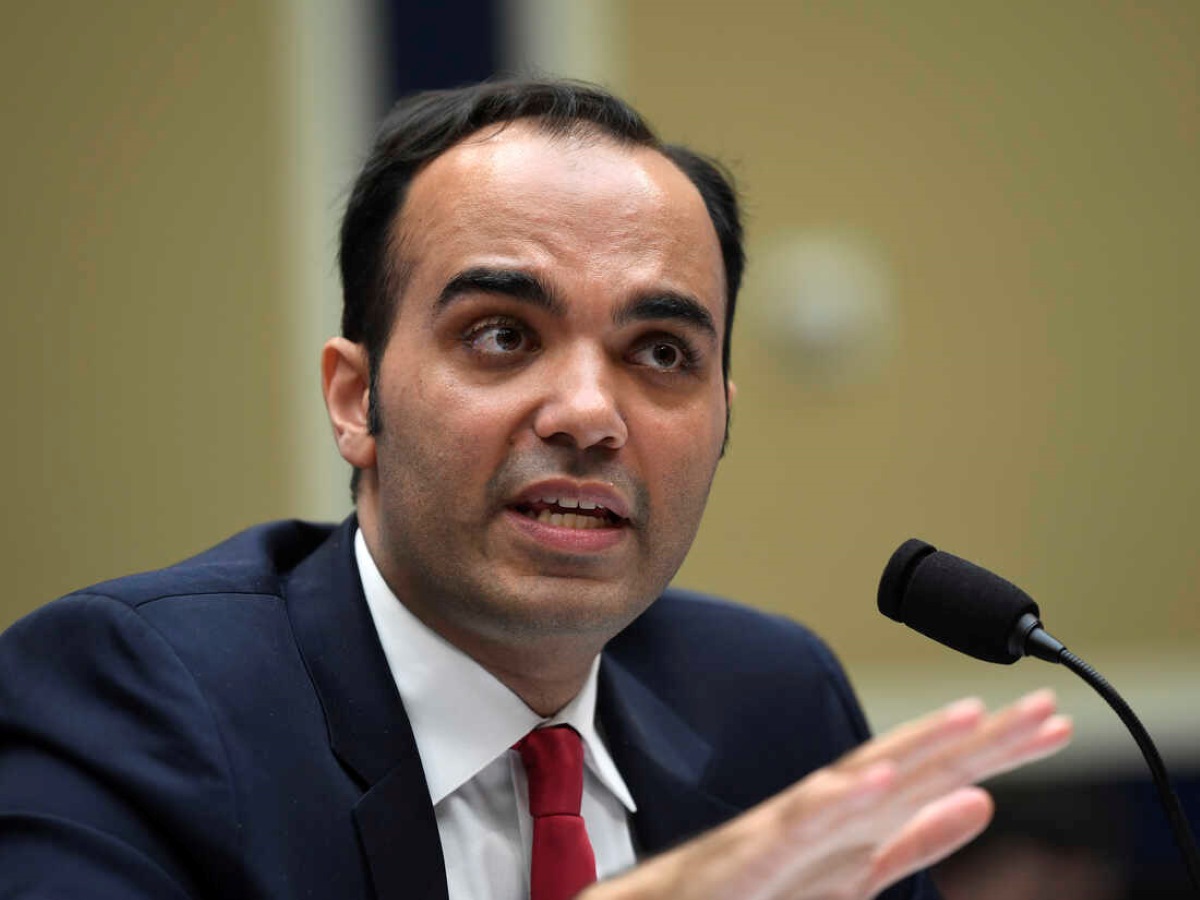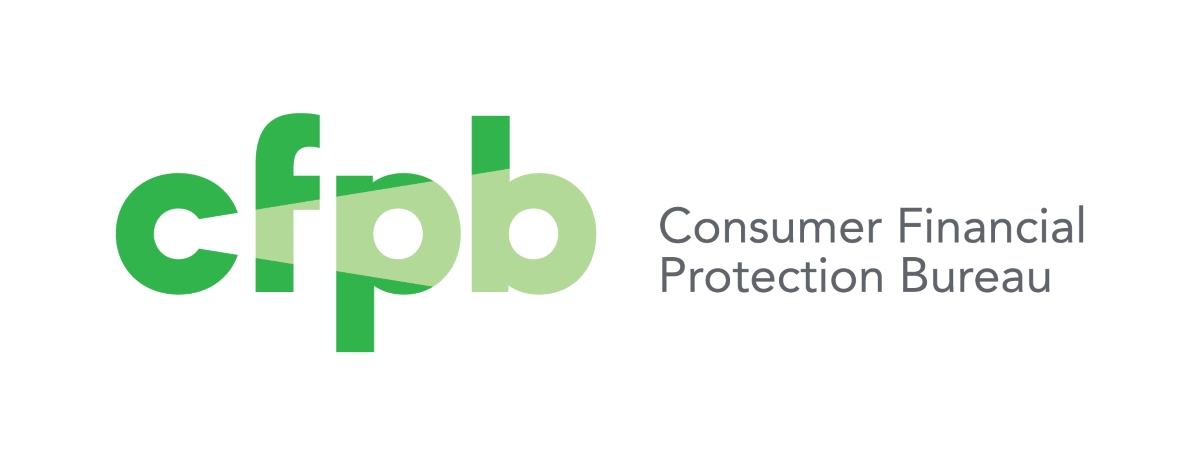Home>Finance>Who Oversees The Consumer Financial Protection Bureau?
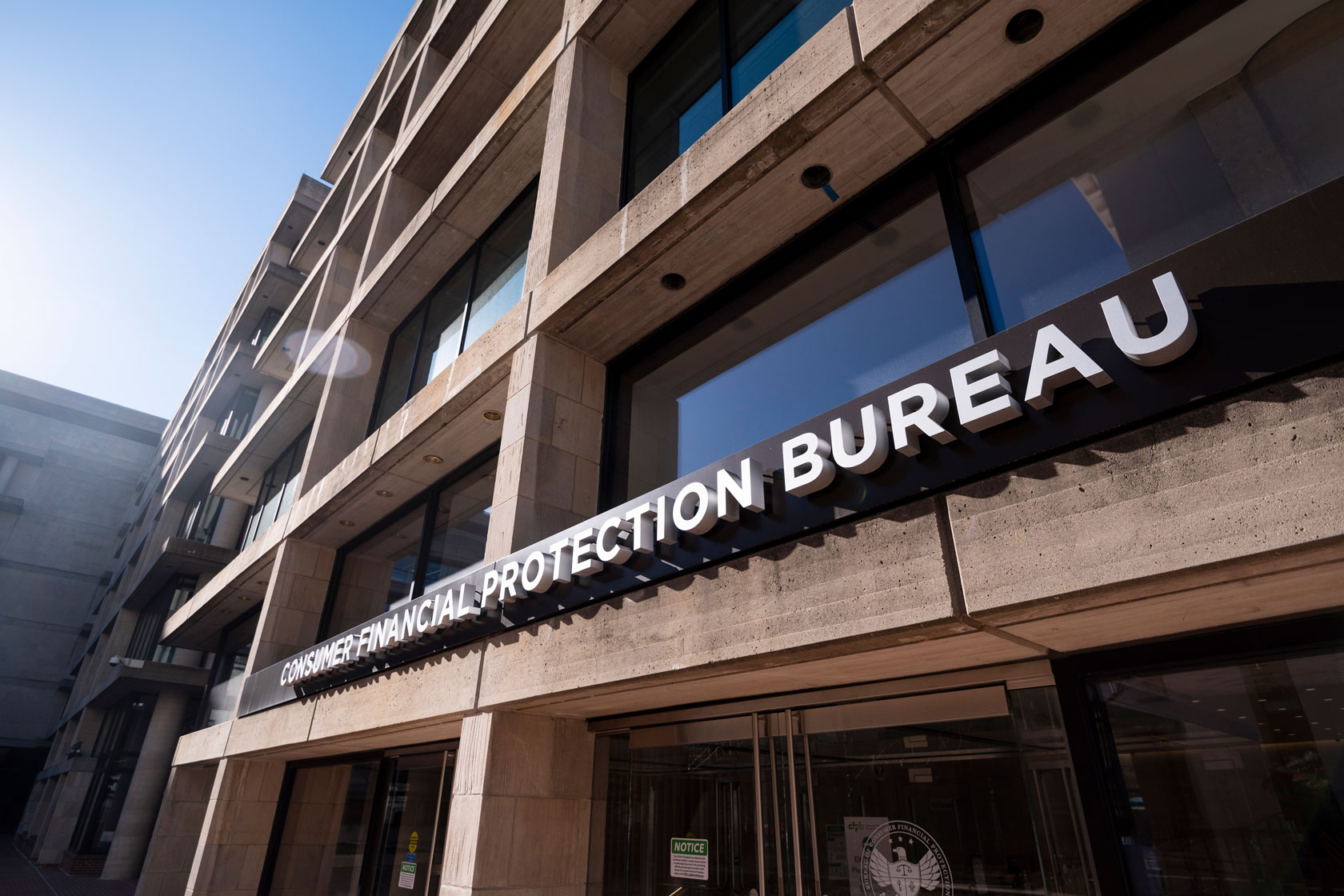

Finance
Who Oversees The Consumer Financial Protection Bureau?
Modified: March 1, 2024
Discover who oversees the Consumer Financial Protection Bureau and gain insight into the finance industry with this informative article.
(Many of the links in this article redirect to a specific reviewed product. Your purchase of these products through affiliate links helps to generate commission for LiveWell, at no extra cost. Learn more)
Table of Contents
- Introduction
- Purpose of the Consumer Financial Protection Bureau
- Establishment of the Consumer Financial Protection Bureau
- Key Functions and Responsibilities of the Consumer Financial Protection Bureau
- Leadership Structure of the Consumer Financial Protection Bureau
- The Director of the Consumer Financial Protection Bureau
- Role of Congress in Oversight of the Consumer Financial Protection Bureau
- Role of the President in Oversight of the Consumer Financial Protection Bureau
- Role of the Courts in Oversight of the Consumer Financial Protection Bureau
- Role of Other Federal Agencies in Oversight of the Consumer Financial Protection Bureau
- Conclusion
Introduction
The Consumer Financial Protection Bureau (CFPB) is an independent agency in the United States government that is responsible for protecting consumers in the financial marketplace. Established under the Dodd-Frank Wall Street Reform and Consumer Protection Act in 2010, the CFPB plays a crucial role in ensuring fair, transparent, and efficient financial markets for consumers across the country.
The CFPB is dedicated to preventing deceptive and unfair practices by financial institutions, promoting financial education and empowerment, and enforcing consumer protection laws. With a wide range of responsibilities, the CFPB oversees various financial products and services, including mortgages, credit cards, student loans, payday loans, and banking practices.
The primary objective of the CFPB is to safeguard consumers from abusive and harmful practices in the financial industry. By implementing and enforcing regulations, conducting research, and providing resources and information to the public, the bureau aims to ensure that consumers have the knowledge, protection, and access to financial products and services that are fair and beneficial to their financial well-being.
This article will delve into the establishment of the Consumer Financial Protection Bureau, its key functions and responsibilities, the leadership structure, and the various oversight mechanisms in place to ensure the bureau’s effectiveness and accountability.
Purpose of the Consumer Financial Protection Bureau
The primary purpose of the Consumer Financial Protection Bureau (CFPB) is to protect and educate consumers in the financial marketplace. The bureau seeks to ensure that consumers are treated fairly by financial institutions and have access to transparent and reliable financial products and services.
One of the key objectives of the CFPB is to prevent deceptive and unfair practices by financial institutions that can harm consumers. The bureau has the authority to enforce federal consumer financial laws and take legal action against entities engaged in illegal activities. By holding financial institutions accountable for their actions, the CFPB strives to create a level playing field and maintain consumer trust in the financial industry.
The CFPB also plays a vital role in promoting financial education and empowerment. Through educational initiatives and resources, the bureau aims to improve consumers’ understanding of financial products, services, and their rights. This empowers individuals to make informed decisions and protects them from falling victim to fraudulent schemes or predatory lending practices.
In addition to consumer protection, the CFPB is responsible for fostering transparency and competition in the financial marketplace. The bureau works to ensure that consumers have access to clear and accurate information regarding financial products and services. By requiring financial institutions to provide disclosures and terms in a standardized and easy-to-understand format, the CFPB facilitates informed decision-making and enables consumers to compare options effectively.
Another important purpose of the CFPB is to address the unique challenges faced by underserved and vulnerable communities. The bureau actively seeks to protect low-income individuals, students, older adults, and other marginalized groups from discriminatory practices and financial exploitation. By focusing on equity and inclusion, the CFPB aims to promote fair access to financial opportunities and reduce disparities in access to credit and financial services.
In summary, the Consumer Financial Protection Bureau is dedicated to protecting consumers and promoting fairness in the financial marketplace. By enforcing consumer protection laws, educating the public, and fostering transparency and competition, the CFPB plays a crucial role in ensuring that consumers have access to safe and trustworthy financial products and services that meet their needs.
Establishment of the Consumer Financial Protection Bureau
The Consumer Financial Protection Bureau (CFPB) was established under the Dodd-Frank Wall Street Reform and Consumer Protection Act in 2010. The financial crisis of 2008 highlighted the need for stronger consumer protection measures in the financial industry, and the creation of the CFPB was a response to this demand.
Prior to the establishment of the CFPB, consumer financial protection was fragmented across different government agencies, resulting in gaps in oversight and enforcement. The Dodd-Frank Act aimed to address this issue by consolidating consumer protection responsibilities under one umbrella agency – the CFPB.
The CFPB was designed to be an independent agency with the authority to regulate and enforce consumer protection laws in the financial marketplace. It operates autonomously within the Federal Reserve System, which provides it with the necessary funding and oversight to carry out its responsibilities effectively.
The establishment of the CFPB was accompanied by a significant expansion of regulatory powers and authority. The bureau has the ability to write and enforce rules related to consumer financial protection, conduct investigations and examinations of financial institutions, and take legal action against entities engaged in unfair, deceptive, or abusive practices.
Furthermore, the CFPB is responsible for collecting and analyzing consumer complaints related to financial products and services. This feedback helps the bureau identify trends and patterns of misconduct in the industry and take appropriate action to address them. It also serves as a valuable resource for consumers, providing them with a platform to voice their concerns and seek resolution.
In order to ensure transparency and accountability, the CFPB is required to submit annual reports to Congress detailing its activities, priorities, and regulatory actions. Additionally, the bureau is subject to oversight by the Government Accountability Office, which conducts audits and evaluations to assess its performance and adherence to legal requirements.
The establishment of the Consumer Financial Protection Bureau marked a significant milestone in the history of consumer protection in the United States. By consolidating regulatory authority and focusing on consumer interests, the CFPB has been able to create a stronger and more unified approach to safeguarding consumers in the financial marketplace.
Key Functions and Responsibilities of the Consumer Financial Protection Bureau
The Consumer Financial Protection Bureau (CFPB) has a wide range of functions and responsibilities aimed at protecting consumers in the financial marketplace. These include:
- Enforcement of Federal Consumer Financial Laws: One of the primary responsibilities of the CFPB is to enforce federal consumer financial laws. The bureau has the authority to investigate and take legal action against financial institutions that engage in unfair, deceptive, or abusive practices. By holding these entities accountable, the CFPB seeks to promote transparency and integrity in the financial industry.
- Rulemaking and Regulation: The CFPB has the power to write and enforce rules and regulations pertaining to consumer financial protection. Through this process, the bureau establishes guidelines and standards that financial institutions must adhere to in order to ensure fair and informed practices in the market.
- Consumer Complaint Handling: The CFPB operates a consumer complaint database where individuals can submit complaints regarding financial products and services. The bureau takes these complaints seriously and uses the information to identify patterns of misconduct and potential areas for regulatory action. Additionally, the CFPB works to resolve individual consumer complaints by facilitating communication and seeking resolution with the involved financial institution.
- Financial Education and Empowerment: The CFPB is committed to promoting financial education and empowerment among consumers. The bureau provides resources, guides, and tools to help individuals understand their financial rights, make informed decisions, and navigate the complexities of the financial marketplace. By improving financial literacy, the CFPB aims to ensure that consumers are equipped to protect themselves from unfair practices and financial exploitation.
- Research and Market Monitoring: The CFPB conducts research and analysis to gain insights into consumer financial markets and identify emerging risks and trends. By monitoring the behavior of financial institutions, the bureau can identify potential areas of concern and take proactive measures to protect consumers. The research conducted by the CFPB also helps inform its rulemaking processes and policy decisions.
- Supervision and Examination: The CFPB has the authority to supervise and examine financial institutions to ensure compliance with consumer protection laws. This includes conducting on-site examinations, reviewing financial records, and assessing the institution’s practices and procedures. The goal of supervision and examination is to identify potential risks to consumers and take appropriate actions, such as issuing corrective measures or imposing penalties.
By carrying out these functions and responsibilities, the Consumer Financial Protection Bureau works diligently to protect consumers from abusive and deceptive practices, promote transparency and fairness in the financial marketplace, and empower individuals with the knowledge and tools they need to make informed financial decisions.
Leadership Structure of the Consumer Financial Protection Bureau
The Consumer Financial Protection Bureau (CFPB) operates under a leadership structure that ensures its effective functioning and oversight. The key positions within the CFPB’s leadership include the Director, Deputy Director, and the Consumer Financial Protection Bureau Advisory Board.
Director: The Director of the CFPB is appointed by the President of the United States and confirmed by the Senate. The Director plays a critical role in setting the strategic direction of the bureau and making key policy decisions. They are responsible for the overall management and operations of the CFPB, including the implementation of the bureau’s mission and objectives. The Director also represents the CFPB in congressional hearings and other public forums.
Deputy Director: The Deputy Director of the CFPB is also appointed by the President and confirmed by the Senate. This position assists the Director in overseeing the day-to-day operations of the bureau, including the execution of its statutory responsibilities. The Deputy Director may act as the Director in their absence or in the event of a vacancy in the Director’s position.
Consumer Financial Protection Bureau Advisory Board: The CFPB Advisory Board consists of experts from various fields, including consumer protection, consumer finance, banking, and financial education. The Advisory Board provides insights and recommendations to the CFPB on emerging consumer financial issues, economic trends, and policy matters. The board serves as a valuable resource for the CFPB, offering diverse perspectives and expertise that inform the bureau’s decision-making processes.
The leadership structure of the CFPB is designed to ensure a balance of expertise, accountability, and transparency. The Director and Deputy Director, appointed by the President and confirmed by the Senate, bring leadership and vision to the bureau, while the Advisory Board provides a platform for external input and guidance.
It is worth noting that the CFPB operates independently within the Federal Reserve System. This independence allows the bureau to carry out its statutory responsibilities without undue influence or interference from partisan politics or industry pressures.
Overall, the leadership structure of the Consumer Financial Protection Bureau enables effective governance and decision-making, ensuring that the bureau remains focused on its mission of protecting consumers in the financial marketplace.
The Director of the Consumer Financial Protection Bureau
The Director of the Consumer Financial Protection Bureau (CFPB) is a key leadership position responsible for overseeing and guiding the operations of the bureau. Appointed by the President of the United States and confirmed by the Senate, the Director plays a crucial role in shaping the direction and policies of the CFPB.
The Director’s primary responsibility is to ensure the effective implementation of the CFPB’s mission, which is to protect consumers in the financial marketplace. This involves developing strategies and initiatives that promote fair, transparent, and competitive practices in the financial industry.
The Director also holds the authority to exercise regulatory powers and enforce consumer protection laws. They have the ability to issue rules and regulations to address issues of consumer harm, investigate and take legal action against entities engaged in unlawful practices, and oversee the examination and supervision of financial institutions to ensure compliance with consumer protection laws.
In addition, the Director represents the CFPB in various forums, including congressional hearings, public events, and meetings with stakeholders. They serve as the face of the bureau, communicating its mission, priorities, and accomplishments to the public and advocating for policies that will benefit consumers.
The Director holds significant decision-making power within the CFPB. They determine the bureau’s budget, allocate resources, and establish priorities for its activities. They are responsible for hiring and managing personnel, including the senior leadership team, to carry out the bureau’s day-to-day operations.
Transparency and accountability are key aspects of the Director’s role. The CFPB is required to submit annual reports to Congress, detailing its activities, regulatory actions, and plans for the future. The Director is responsible for ensuring that these reports accurately reflect the bureau’s work and demonstrate its commitment to fulfilling its mission.
It is worth noting that the Director serves a five-year term, providing a level of stability and continuity to the leadership of the CFPB. This term limit aims to insulate the position from short-term political pressures, allowing the Director to focus on long-term goals and strategic planning.
The Director of the Consumer Financial Protection Bureau plays a critical role in safeguarding consumers in the financial marketplace. They have the authority to enforce consumer protection laws, set policy priorities, and ensure the bureau operates in the best interests of the public. Through their leadership and strategic vision, the Director shapes the direction of the CFPB and works towards the goal of a fair and transparent financial marketplace for all consumers.
Role of Congress in Oversight of the Consumer Financial Protection Bureau
Congress plays a vital role in overseeing the operations and activities of the Consumer Financial Protection Bureau (CFPB). As an independent agency within the federal government, the CFPB is subject to congressional oversight, ensuring accountability and transparency in its functioning.
One way in which Congress exercises oversight over the CFPB is through its power to appropriate funds. The bureau’s funding is subject to congressional approval, and lawmakers have the authority to allocate resources to support the CFPB’s operations. This allows Congress to have a say in the financial resources available to the bureau and ensures that its activities align with congressional priorities.
Congress also holds regular oversight hearings in which members of Congress review the activities, performance, and actions of the CFPB. During these hearings, lawmakers have the opportunity to question the Director and other relevant officials about the bureau’s policies, enforcement actions, rulemaking processes, and overall effectiveness in protecting consumers’ financial interests. Congressional committees, such as the House Financial Services Committee and the Senate Banking Committee, have jurisdiction over the CFPB and conduct these oversight hearings.
In addition, Congress has the authority to amend or modify the laws that govern the CFPB. The Dodd-Frank Wall Street Reform and Consumer Protection Act, which established the bureau, can be amended or repealed by Congress. Changes to the law can impact the CFPB’s mandate, authority, and scope of activities, thus influencing its ability to protect consumers effectively.
Congress also receives regular reports from the CFPB, as mandated by law. The bureau is required to submit an annual report to Congress that provides an overview of its activities, such as rulemakings, enforcement actions, and consumer complaint data. These reports allow lawmakers to evaluate the bureau’s performance and identify potential areas for improvement or legislative intervention.
Furthermore, Congress has the power to confirm or reject the appointment of the Director of the CFPB. The President nominates an individual for the position of Director, and the Senate holds confirmation hearings and votes on the nomination. This process allows Congress to exercise oversight by scrutinizing and approving the appointment of the bureau’s top official.
Overall, the role of Congress in overseeing the Consumer Financial Protection Bureau is essential for ensuring that the bureau operates in the best interests of the public. Through appropriations, oversight hearings, legislative actions, and confirmation processes, Congress has the authority to influence the direction, policies, and accountability of the CFPB.
Role of the President in Oversight of the Consumer Financial Protection Bureau
The President of the United States plays a significant role in the oversight of the Consumer Financial Protection Bureau (CFPB). As the head of the executive branch, the President has certain powers and responsibilities in relation to the bureau.
First and foremost, the President has the authority to nominate and appoint the Director of the CFPB. The Director is a key leadership position within the bureau and is responsible for overseeing its operations and implementing its mission. The appointment of the Director is subject to confirmation by the Senate, ensuring that the President’s nominee undergoes a thorough review by Congress.
The President also has the power to set the strategic direction of the CFPB. The President’s policy priorities and objectives can shape the bureau’s focus and areas of emphasis. The President can provide guidance on the issues and challenges that the CFPB should address, aligning the bureau’s efforts with broader administration goals.
Furthermore, the President has the authority to issue executive orders that can impact the operations and policies of the CFPB. Through executive orders, the President can direct the bureau to prioritize specific issues or modify existing regulations or procedures. Executive orders also have the potential to influence the interpretation and enforcement of consumer protection laws by providing guidance and instructions to the CFPB.
Additionally, the President has the power to shape the CFPB’s budget. The President submits the annual budget request to Congress, which includes the funding allocation for the CFPB. By influencing the amount of funding allocated to the bureau, the President can influence the resources available to support its operations and initiatives.
It is important to note that the President’s oversight role is not unilateral. The CFPB operates as an independent agency within the federal government, ensuring that it maintains a degree of autonomy from partisan politics. The President’s oversight of the CFPB is subject to constitutional and legal constraints, which ensure the bureau’s independence while still allowing for effective executive leadership.
Overall, the President of the United States plays a vital role in the oversight of the Consumer Financial Protection Bureau. Through the appointment of the Director, setting strategic priorities, issuing executive orders, and shaping the bureau’s budget, the President exercises authority and provides guidance in enhancing the effectiveness and accountability of the CFPB.
Role of the Courts in Oversight of the Consumer Financial Protection Bureau
The courts in the United States play a crucial role in overseeing the actions and decisions of the Consumer Financial Protection Bureau (CFPB). As an independent agency, the CFPB is subject to legal challenges and judicial review, ensuring that its activities align with the law and adhere to constitutional principles.
The courts have the authority to review and interpret the laws that govern the CFPB, including the Dodd-Frank Wall Street Reform and Consumer Protection Act. In cases where the interpretation or application of the law is in question, individuals, financial institutions, or other interested parties can file lawsuits to challenge the actions or regulations of the CFPB.
One key aspect of the courts’ role in overseeing the CFPB is ensuring the bureau’s compliance with due process and procedural requirements. If individuals or entities believe that they have been unfairly treated or that the CFPB has violated their rights during an investigation or enforcement action, they can seek recourse through the courts. The courts have the power to review these claims and determine if due process principles have been upheld.
Courts also play a role in reviewing and validating the CFPB’s enforcement actions. When the CFPB takes legal action against financial institutions or other entities for violations of consumer protection laws, those entities have the right to challenge the bureau’s actions in court. The courts assess whether the CFPB has provided sufficient evidence to support its claims and whether its enforcement actions are lawful and proportionate.
Another important role of the courts is in determining the constitutionality of the CFPB’s structure and operations. The CFPB has faced legal challenges regarding the constitutionality of its leadership structure, particularly the power and independence of the Director. Courts have ruled on various aspects of the CFPB’s structure, including the removal provisions for the Director and the bureau’s funding mechanism, providing important guidance on the boundaries of its authority.
Furthermore, the courts can provide clarifications on ambiguous or conflicting interpretations of consumer protection laws. When legal disputes arise concerning the interpretation or application of laws relevant to the CFPB’s mandate, the courts’ rulings help establish precedents and guidelines for the bureau’s future actions.
Ultimately, the role of the courts in overseeing the Consumer Financial Protection Bureau is to ensure that the bureau operates within the bounds of the law, guarantees due process, and upholds constitutional principles. Through legal challenges, judicial review, and the issuance of rulings, the courts provide a vital check on the CFPB’s authority and promote transparency and accountability in its actions.
Role of Other Federal Agencies in Oversight of the Consumer Financial Protection Bureau
The Consumer Financial Protection Bureau (CFPB) operates within the broader landscape of federal agencies in the United States. While the CFPB is an independent agency, it interacts and collaborates with other federal agencies in various ways, both in terms of oversight and coordination of efforts related to consumer financial protection.
One of the key roles of other federal agencies is to coordinate and collaborate with the CFPB on matters of mutual interest and jurisdiction. Several agencies, such as the Federal Reserve, the Office of the Comptroller of the Currency, and the Federal Trade Commission, share responsibilities in regulating and supervising financial institutions. They work closely with the CFPB to ensure consistency in enforcement of laws and regulations and to address consumer protection concerns.
These agencies often have overlapping jurisdiction with the CFPB, and coordination is essential to avoid duplication of efforts, streamline regulatory processes, and promote effective oversight of financial institutions. Through regular communication and information sharing, these federal agencies help align their respective efforts and pool resources to enhance the overall effectiveness of consumer financial protection.
In addition, other federal agencies play a role in overseeing the CFPB through their participation in interagency committees and forums. These committees, such as the Financial Stability Oversight Council (FSOC) and the Council of Inspectors General on Financial Oversight (CIGFO), provide a platform for collaboration, information exchange, and coordination among various federal agencies, including the CFPB.
The FSOC, for example, is responsible for identifying and addressing threats to the stability of the financial system. The CFPB collaborates with the FSOC and shares information to ensure a comprehensive assessment of risks and to take appropriate actions to mitigate potential systemic risks in the consumer financial marketplace.
Furthermore, federal agencies may play a role in overseeing specific aspects of the CFPB’s operations or areas within its jurisdiction. For instance, the Government Accountability Office (GAO) conducts audits and evaluations to assess the effectiveness and efficiency of the CFPB’s activities and adherence to legal requirements. The GAO’s oversight contributes to ensuring accountability and transparency in the bureau’s operations.
Other agencies with specific regulatory expertise, such as the Securities and Exchange Commission (SEC) and the Federal Communications Commission (FCC), may provide guidance or assistance to the CFPB in areas where their mandates intersect, such as financial products related to securities or consumer communication practices.
In summary, other federal agencies play an important role in overseeing the Consumer Financial Protection Bureau. By coordinating efforts, sharing information, and participating in interagency committees, these agencies ensure effective collaboration, alignment of policies, and robust oversight of consumer financial protection. Their involvement contributes to a comprehensive regulatory framework that promotes transparency, accountability, and the well-being of consumers in the financial marketplace.
Conclusion
The Consumer Financial Protection Bureau (CFPB) is a vital agency responsible for protecting consumers in the financial marketplace. Established under the Dodd-Frank Wall Street Reform and Consumer Protection Act, the CFPB serves as a dedicated watchdog, ensuring fair and transparent practices in the financial industry and empowering individuals with the knowledge to make informed financial decisions.
Through enforcement of consumer protection laws, rulemaking and regulation, consumer complaint handling, financial education, research and market monitoring, and supervision and examination, the CFPB fulfills its key functions and responsibilities to safeguard consumers’ interests.
Oversight of the CFPB comes from various sources. Congress exercises its role through appropriations, oversight hearings, and legislative actions, ensuring that the CFPB remains accountable and aligned with congressional priorities. The President influences the CFPB’s direction, policies, and budget, appointing the Director and issuing executive orders to guide the bureau’s activities. The courts provide judicial review, ensuring that the CFPB operates within the bounds of the law and respects due process.
Other federal agencies collaborate with the CFPB, coordinating efforts, sharing information, and participating in interagency committees. This collaboration enhances the effectiveness and efficiency of consumer financial protection, promoting consistent enforcement and addressing consumer protection concerns from various perspectives.
In conclusion, the Consumer Financial Protection Bureau plays a critical role in protecting consumers from deceptive and unfair practices in the financial marketplace. With its commitment to transparency, accountability, and empowerment, the CFPB strives to create a level playing field and ensure that consumers have access to financial products and services that are fair, transparent, and beneficial to their well-being. Through the combined efforts of Congress, the President, the courts, and other federal agencies, the CFPB’s mission of consumer protection is bolstered, strengthening its ability to make a positive impact on the lives of individuals and families across the nation.


